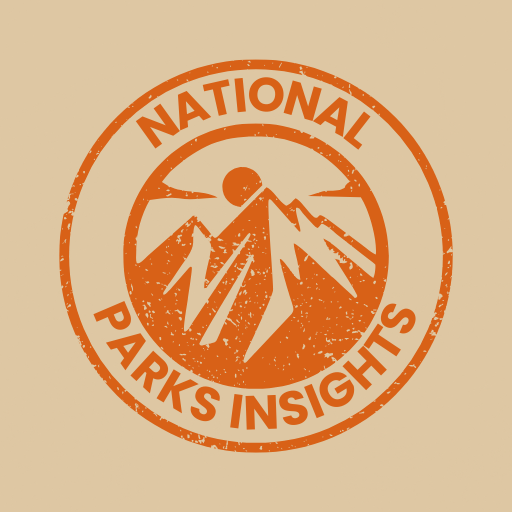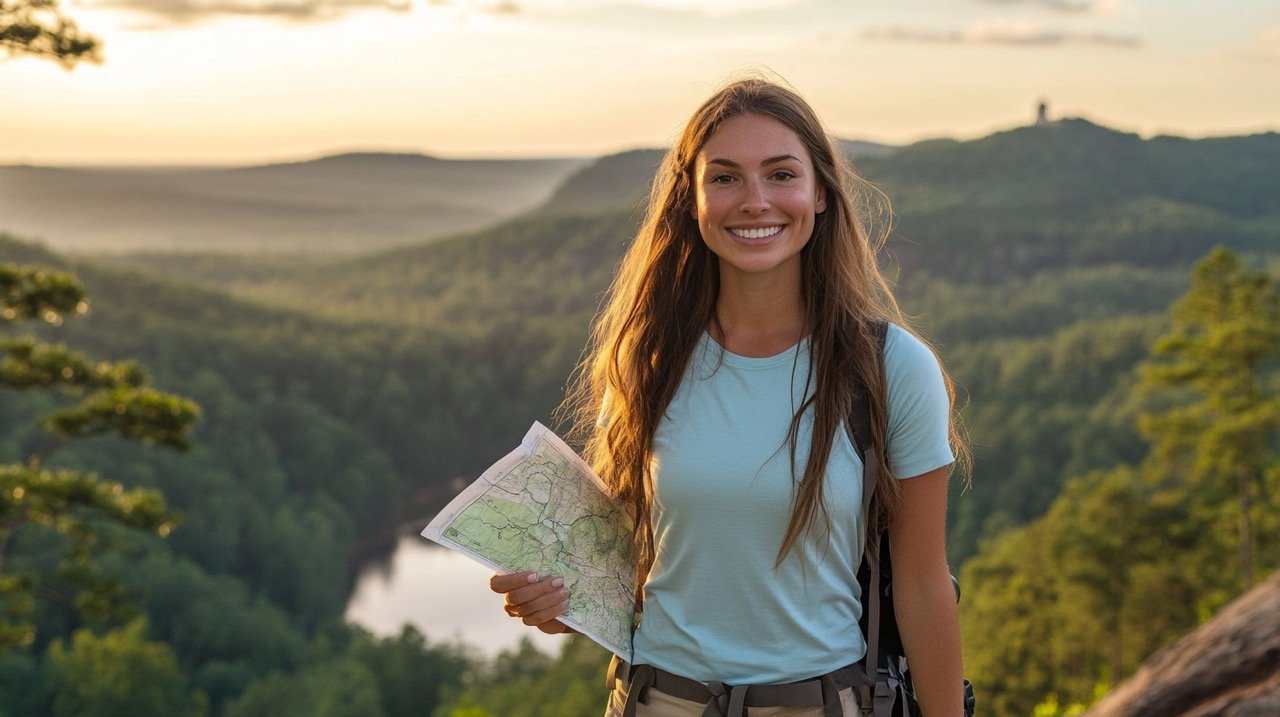Introduction to National Parks in Georgia
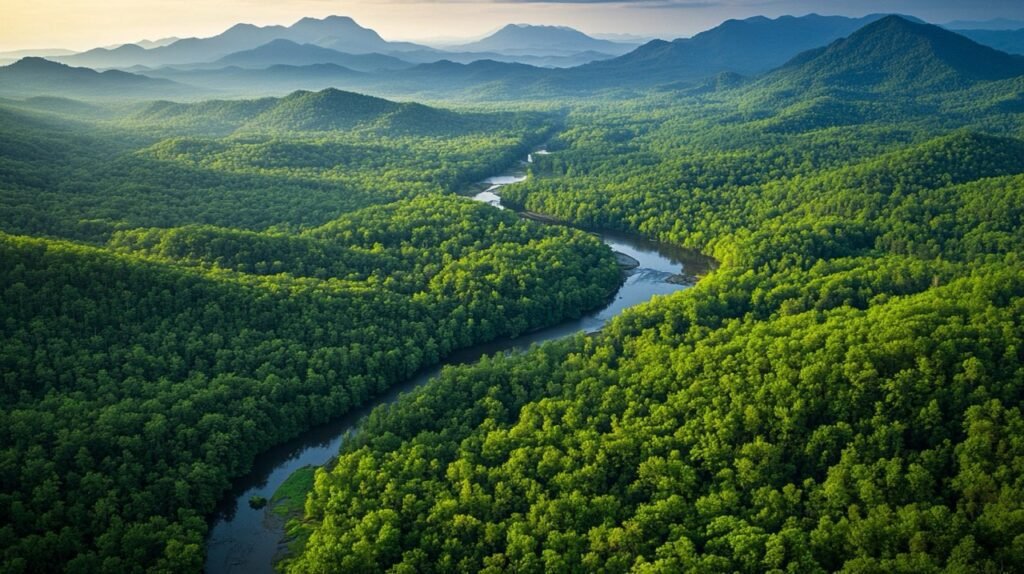
Georgia’s natural beauty shines through its national parks. These protected areas offer a mix of history and nature. From coastal islands to mountain peaks, Georgia’s parks are diverse.Did you know Georgia has 11 national park sites? They cover over 39,000 acres of land. Each park tells a unique story about the state’s rich heritage.Here’s a quick overview of what you’ll find:
• Stunning landscapes
• Rich wildlife
• Historical landmarks
• Recreational activities
National parks in Georgia aren’t just pretty places. They’re vital for conservation too. These parks protect:
- Rare plant species
- Endangered animals
- Important ecosystems
- Historical sites
Visitors to Georgia’s national parks can enjoy:
- Hiking trails
- Camping spots
- Educational programs
- Scenic drives
Georgia’s parks saw over 7 million visitors in 2020. That’s a lot of nature lovers!Ready to explore? Let’s dive into what makes each park special. From the Chattahoochee-Oconee National Forests to the coastal Cumberland Island, adventure awaits.
Click here for the National Park’s Government Website
Chattahoochee-Oconee National Forests
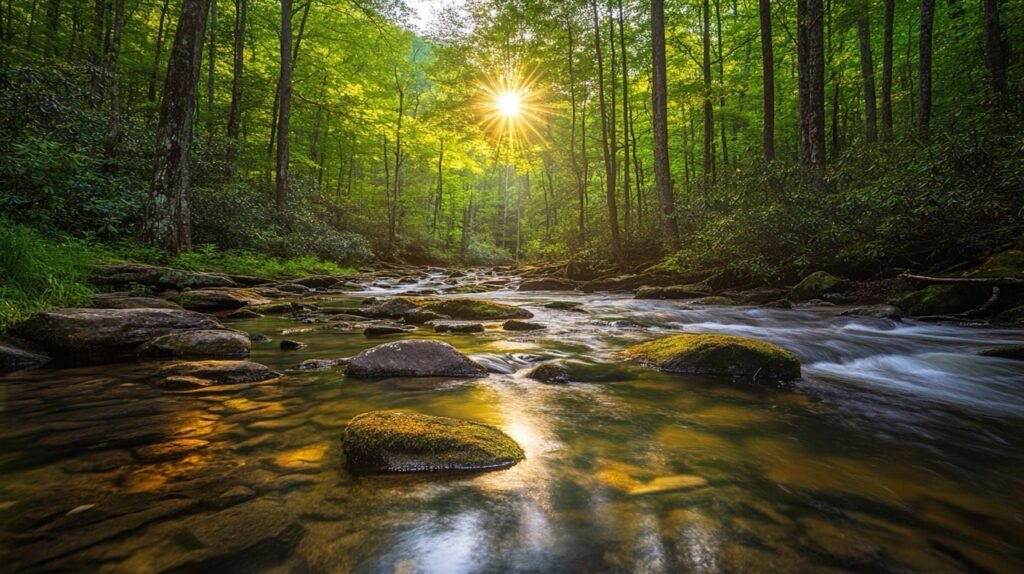
The Chattahoochee-Oconee National Forests are a natural gem in Georgia. These forests cover a vast area of 867,000 acres. They’re a haven for nature lovers and outdoor enthusiasts.
Location and Features
- Chattahoochee Forest: North Georgia mountains
- Oconee Forest: Piedmont region
- Combined area: Spans 26 counties
Natural Wonders
- Diverse ecosystems
- Over 850 miles of recreation trails
- Home to Georgia’s highest peak, Brasstown Bald
Wildlife
The forests are teeming with wildlife:
| Common Animals | Rare Species |
|---|---|
| Black bears | Indiana bats |
| Wild turkeys | Wood storks |
| White-tailed deer | Red-cockaded woodpeckers |
Activities
Visitors can enjoy:
- Hiking
- Camping
- Fishing
- Hunting (with proper permits)
- Scenic driving
Did You Know?
The Chattahoochee River, which runs through the forest, provides drinking water for millions in Atlanta.
Visitor Tips
- Check weather before visiting
- Bring proper gear for hiking
- Follow Leave No Trace principles
Plan your visit to experience the beauty of Georgia’s largest national forest. Learn more about Chattahoochee-Oconee National Forests
Cumberland Island National Seashore
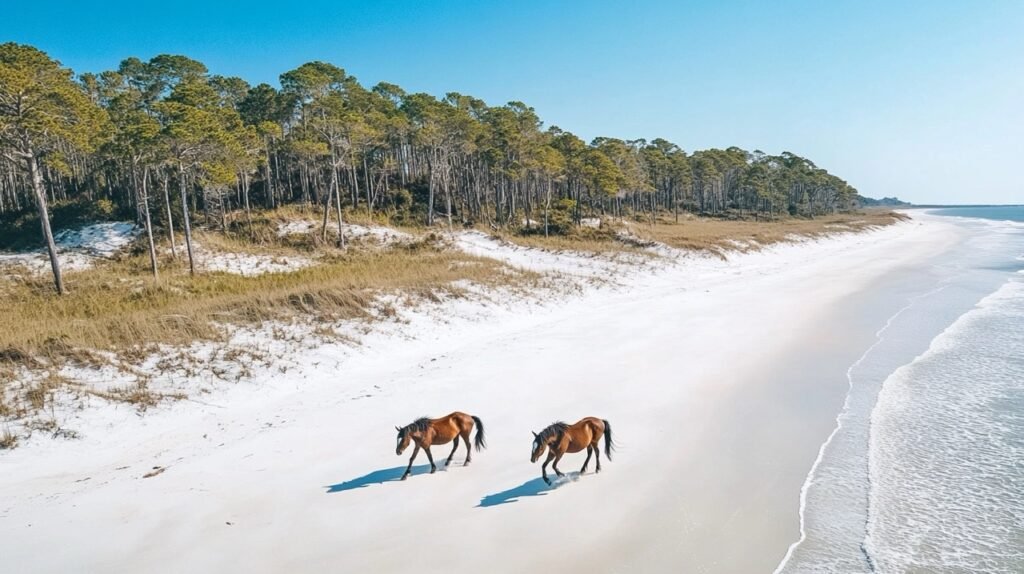
Cumberland Island is Georgia’s largest barrier island. It’s a unique blend of natural wonders and rich history. This national seashore offers visitors a rare glimpse into untouched coastal wilderness.
Island Features
- 18 miles of undeveloped beach
- 9,800 acres of wilderness
- Historic ruins and structures
Wildlife Highlights
- Wild horses: Over 150 roam freely
- Nesting sea turtles
- Various bird species
Activities
Visitors can enjoy:
- Beachcombing
- Hiking
- Birdwatching
- Camping
- Tours of historic sites
Getting There
Access is by ferry only:
| Departure Point | Trip Duration | Daily Trips |
|---|---|---|
| St. Marys, GA | 45 minutes | 2-3 |
Accommodation
- Camping: Developed and wilderness sites available
- Greyfield Inn: Only hotel on the island
Preservation Efforts
Cumberland Island is crucial for:
- Protecting coastal ecosystems
- Preserving historical structures
- Maintaining wildlife habitats
Visitor Tips
- Reservations required for ferry and camping
- Bring supplies as there are no stores on the island
- Respect wildlife and leave no trace
Experience the untouched beauty of Georgia’s coast at Cumberland Island National Seashore.Plan your visit to Cumberland Island
Kennesaw Mountain National Battlefield Park
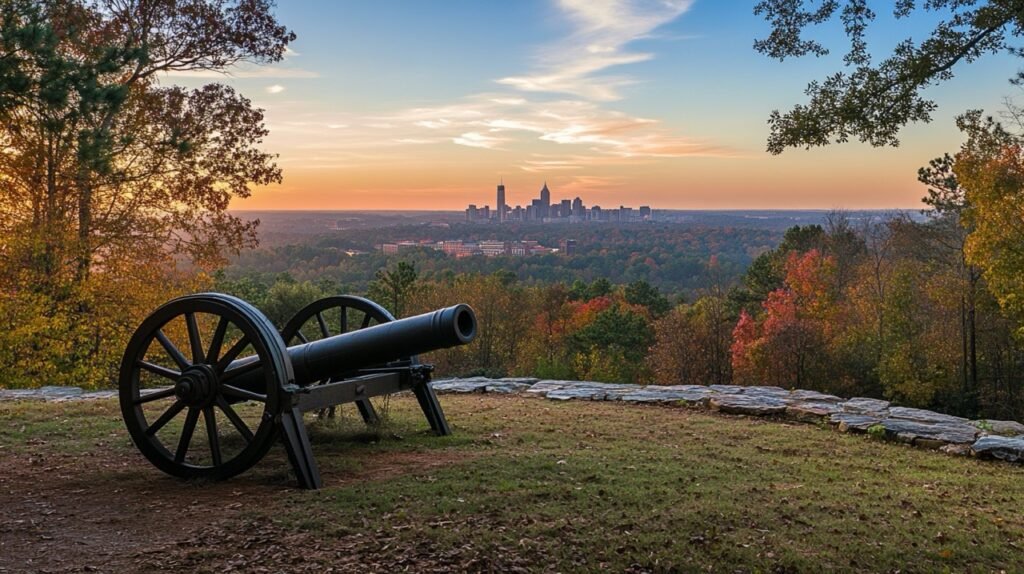
Kennesaw Mountain National Battlefield Park preserves a Civil War battleground. It’s a place where history and nature intertwine. The park offers both educational experiences and outdoor recreation.
Historical Significance
- Site of 1864 Atlanta Campaign battle
- 2,965 acres of preserved battlefield
Key Features
- Kennesaw Mountain (1,808 feet elevation)
- 22 miles of interpretive trails
- Visitor Center with museum
Hiking Trails
| Trail Name | Distance | Difficulty |
|---|---|---|
| Kennesaw Mountain Trail | 1.4 miles | Moderate |
| Environmental Trail | 1.35 miles | Easy |
| Pigeon Hill Trail | 0.8 miles | Moderate |
Wildlife
The park is home to diverse wildlife:
- White-tailed deer
- Red-tailed hawks
- Eastern box turtles
Activities
Visitors can enjoy:
- Hiking
- Birdwatching
- Picnicking
- Guided tours
- Museum exhibits
Educational Programs
- Ranger-led battlefield tours
- Living history demonstrations
- Junior Ranger program
Visitor Tips
- Best visited in spring or fall
- Bring water and wear comfortable shoes
- Check website for shuttle bus schedule
Experience Civil War history and natural beauty at Kennesaw Mountain National Battlefield Park.Learn more about Kennesaw Mountain
Martin Luther King Jr. National Historical Park

Martin Luther King Jr. National Historical Park honors the life and legacy of the civil rights leader. Located in Atlanta, it preserves key sites from Dr. King’s life. The park offers a powerful journey through American history.
Key Sites
- Birth Home of Dr. King
- Ebenezer Baptist Church
- The King Center
- Fire Station No. 6
Birth Home Tours
- Free guided tours available
- Limited to 15 people per tour
- First-come, first-served basis
The King Center
Features:
- Dr. King’s tomb
- Eternal Flame
- Reflecting pool
Visitor Center Exhibits
| Exhibit | Focus |
|---|---|
| Children of Courage | Civil Rights Movement’s youth |
| Courage To Lead | Dr. King’s life and work |
| Freedom Road | Interactive exhibit on segregation |
Educational Programs
- Junior Ranger program
- School group tours
- Civil rights workshops
Visitor Tips
- Allow 2-3 hours for a full visit
- Birth Home tours fill up quickly
- Visit early in the day to avoid crowds
Nearby Attractions
- Sweet Auburn Historic District
- Atlanta BeltLine
- Georgia Aquarium
Experience the inspiring story of Dr. King and the Civil Rights Movement at this historic site.Plan your visit to MLK Jr. National Historical Park
Ocmulgee Mounds National Historical Park

Ocmulgee Mounds National Historical Park showcases 17,000 years of continuous human habitation. It’s a unique blend of Native American heritage and natural beauty. The park offers insights into ancient cultures and diverse ecosystems.
Key Features
- Earth Lodge (reconstructed)
- Great Temple Mound
- Visitor Center with museum
- Ocmulgee River floodplain
Ancient Mounds
| Mound Name | Height | Purpose |
|---|---|---|
| Great Temple Mound | 55 feet | Ceremonial |
| Cornfield Mound | 10 feet | Agricultural |
| Funeral Mound | 8 feet | Burial |
Wildlife and Nature
- Over 200 bird species
- Diverse plant life
- Wetland habitats
Trails and Activities
- 5.5 miles of walking trails
- Birdwatching
- Picnicking
- Fishing (with permit)
Museum Highlights
- 2,000+ artifacts on display
- Interactive exhibits
- Archaeological findings
Educational Programs
- Junior Ranger program
- Guided tours
- Cultural demonstrations
Annual Events
- Ocmulgee Indian Celebration (September)
- Full Moon Hikes
- Heritage Days
Visitor Tips
- Allow 2-3 hours for a full visit
- Wear comfortable shoes for mound climbing
- Check website for special events
Experience millennia of human history and natural wonders at Ocmulgee Mounds.Explore Ocmulgee Mounds National Historical Park
Fort Pulaski National Monument
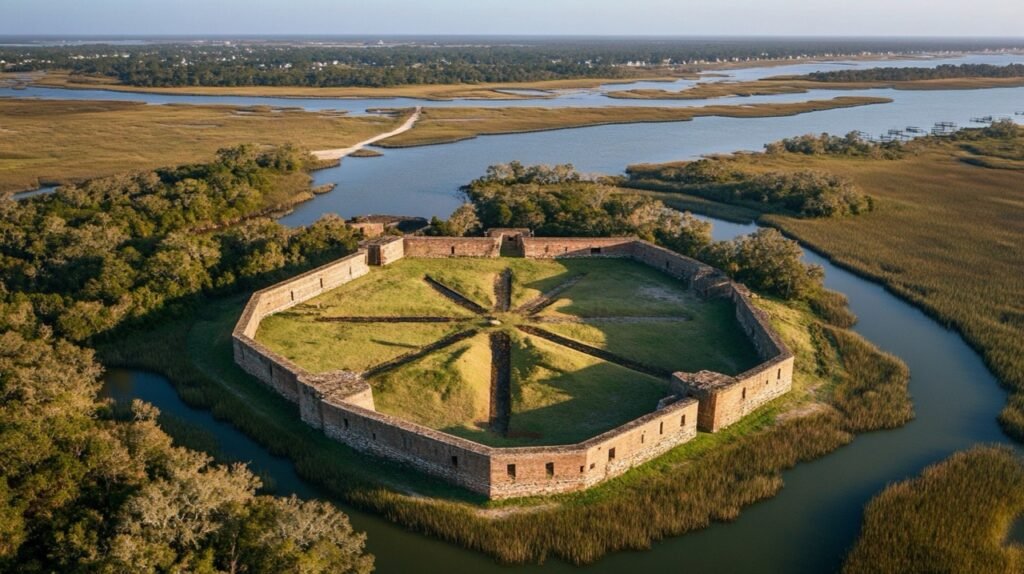
Fort Pulaski National Monument stands as a testament to 19th-century military engineering. Located near Savannah, this fort played a crucial role in the Civil War. Today, it offers visitors a blend of history and coastal nature.
Historical Significance
- Built between 1829 and 1847
- Fell to Union forces in 1862
- Demonstrated the power of rifled cannon
Fort Features
- Massive brick walls (7.5 feet thick)
- Moat system
- Drawbridges
- Demilune (half-moon fortification)
Guided Tours
| Tour Type | Duration | Focus |
|---|---|---|
| Fort Tour | 45 minutes | Architecture and Civil War history |
| Nature Walk | 30 minutes | Coastal ecology |
| Candlelight Tour (seasonal) | 1 hour | Evening atmosphere and stories |
Wildlife and Nature
- Nesting birds (including painted buntings)
- Alligators in the moat
- Salt marsh ecosystems
Activities
- Self-guided fort exploration
- Hiking trails
- Picnicking
- Fishing (with permit)
Museum and Exhibits
- Civil War artifacts
- Interactive displays
- Short film on fort’s history
Special Events
- Cannon firing demonstrations
- Living history reenactments
- Junior Ranger program
Visitor Tips
- Allow 2-3 hours for a full visit
- Bring insect repellent
- Check weather forecast (fort is mostly outdoors)
Experience Civil War history and coastal beauty at Fort Pulaski National Monument.Plan your visit to Fort Pulaski
Fort Frederica National Monument
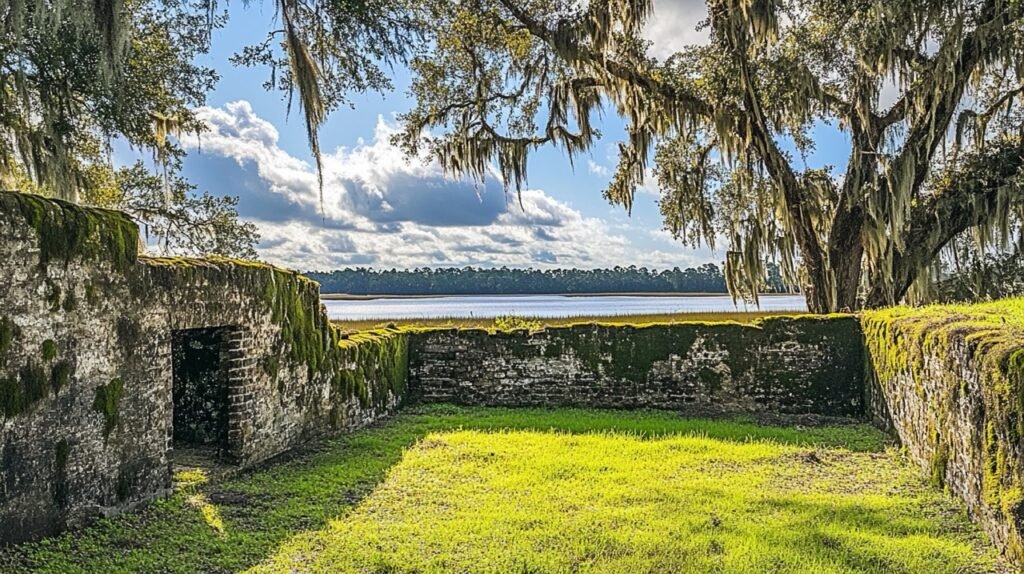
Fort Frederica National Monument preserves the archaeological remnants of a British fort and town. Located on St. Simons Island, it offers a glimpse into colonial Georgia’s past. The site combines history, archaeology, and coastal beauty.
Historical Background
- Founded in 1736 by James Oglethorpe
- Served as a military outpost against Spanish Florida
- Abandoned in the 1750s after its purpose ended
Key Features
- Town ruins
- Fort remains
- Visitor Center with museum
- Frederica River waterfront
Archaeological Highlights
| Site | Description |
|---|---|
| Barracks | Soldiers’ living quarters |
| Broad Street | Main thoroughfare of the town |
| King’s Magazine | Gunpowder storage |
Nature and Wildlife
- Live oak trees
- Coastal birds
- Marsh ecosystems
Activities
- Self-guided walking tour
- Ranger-led programs
- Birdwatching
- Picnicking
Museum Exhibits
- Interactive town model
- Archaeological artifacts
- Colonial life displays
Educational Programs
- Junior Ranger program
- Archaeology demonstrations (seasonal)
- Living history events
Nearby Attractions
- St. Simons Lighthouse
- Christ Church, Frederica
- Cannon’s Point Preserve
Visitor Tips
- Allow 1-2 hours for a full visit
- Wear comfortable walking shoes
- Bring sunscreen and insect repellent
Explore Georgia’s colonial past and coastal beauty at Fort Frederica National Monument.Discover Fort Frederica
Conservation in Georgia’s National Parks
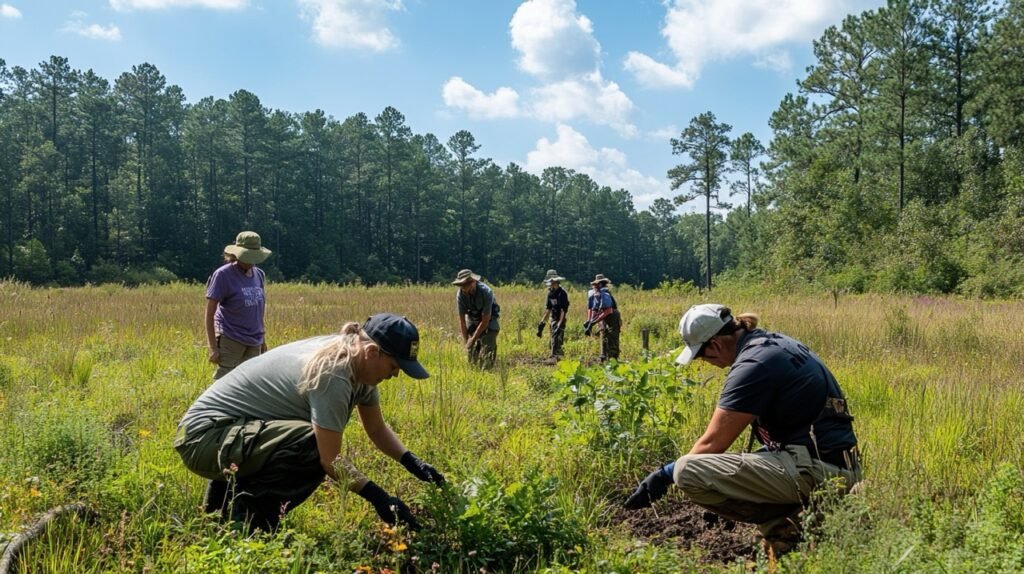
Conservation efforts are crucial for preserving Georgia’s national parks. These initiatives protect natural habitats, wildlife, and historical sites. They ensure future generations can enjoy these treasures.
Current Initiatives
- Habitat Restoration
- Invasive Species Management
- Wildlife Protection
- Cultural Resource Preservation
Habitat Restoration Projects
| Park | Project | Goal |
|---|---|---|
| Cumberland Island | Dune Restoration | Protect nesting sea turtles |
| Chattahoochee-Oconee | Stream Restoration | Improve water quality |
| Kennesaw Mountain | Grassland Restoration | Support native species |
Invasive Species Management
- Removal of non-native plants
- Education programs for visitors
- Monitoring and early detection
Wildlife Protection Efforts
- Sea turtle nesting programs
- Red-cockaded woodpecker conservation
- Black bear management
Cultural Resource Preservation
- Stabilization of historic structures
- Archaeological site protection
- Artifact conservation
Volunteer Opportunities
- Trail maintenance
- Invasive plant removal
- Wildlife surveys
- Visitor education
Environmental Challenges
- Climate change impacts
- Increased visitation
- Urban development pressures
How Visitors Can Help
- Follow Leave No Trace principles
- Report wildlife sightings
- Participate in park clean-up events
- Support Park conservation funds
Conservation is an ongoing effort in Georgia’s national parks. It requires collaboration between park staff, scientists, and visitors.Learn about NPS conservation efforts
Visiting Georgia’s National Parks
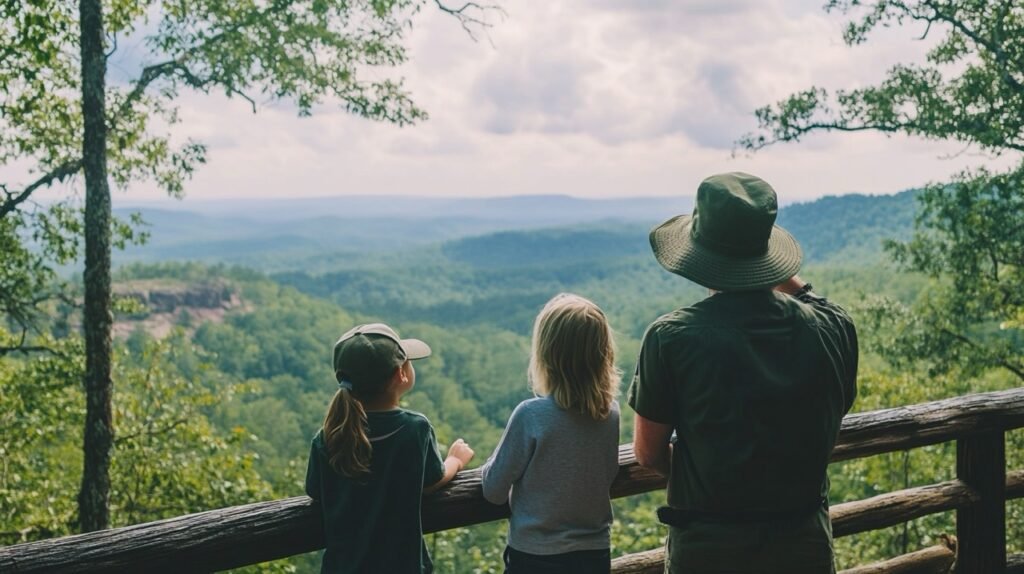
Planning a visit to Georgia’s national parks can be exciting. Each park offers unique experiences throughout the year. Here’s what you need to know to make the most of your trip.
Best Seasons to Visit
| Season | Advantages | Considerations |
|---|---|---|
| Spring | Wildflowers, mild weather | Possible rain showers |
| Summer | Longer days, full access | Hot temperatures, crowds |
| Fall | Autumn colors, cooler temps | Shorter days |
| Winter | Fewer crowds, unique views | Limited services, cold weather |
Accommodation Options
- Campgrounds
- Available in most parks
- Reservations often required
- Backcountry Camping
- Permits needed
- Leave No Trace principles apply
- Nearby Hotels and Lodges
- Options vary by park location
- Book in advance during peak seasons
If you’re planning on hiking during your visit, make sure to wear appropriate footwear. Check out our guide on the Best Hunting Boots, which are also excellent for rugged park terrain.
Accessibility Information
- Visitor centers are wheelchair accessible
- Some trails offer accessible routess
- Audio described tours available in select parks
Park Passes
- America the Beautiful Pass
- Valid for all national parks
- $80 annual fee, free for military and 4th graders
- Park-Specific Passes
- Available for some Georgia parks
- Often more economical for frequent visitors
Safety Tips
- Stay on marked trails
- Carry plenty of water
- Check weather forecasts
- Inform others of your plans
Wear appropriate footwear for hiking and outdoor activities. Our guide on the Best Hunting Boots can help you choose durable and comfortable options suitable for rugged park terrain.
Guided Tour Options
- Ranger-led hikes
- Historical reenactments
- Wildlife watching tours
- Boat tours (where applicable)
Visitor Centers
- Start your visit here
- Get maps and information
- Learn about current conditions
- Join ranger programs
Plan ahead to make the most of your visit to Georgia’s national parks. Each park offers unique experiences and natural wonders. Official NPS Trip Planning Guide
Economic Impact of National Parks in Georgia
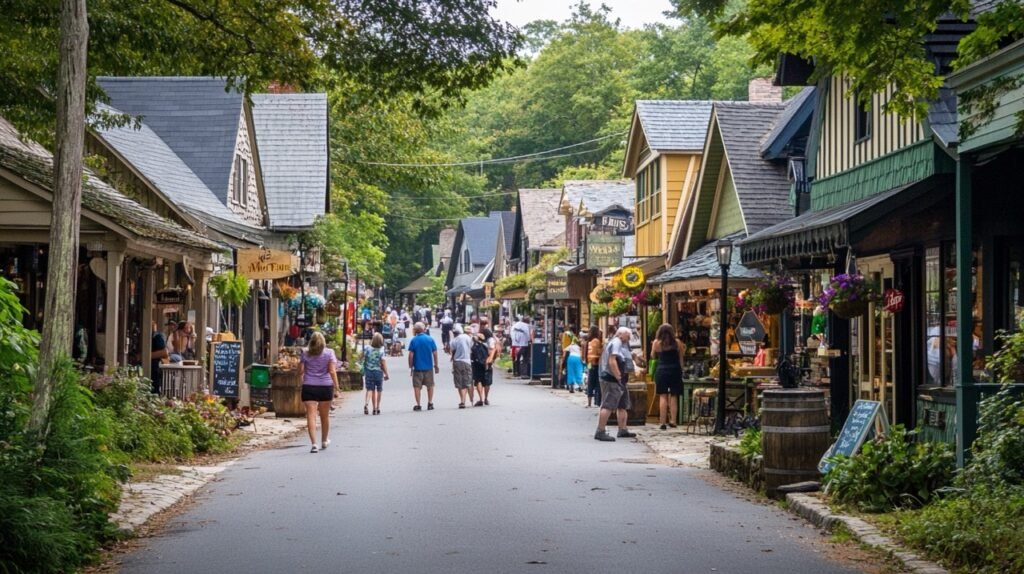
National parks in Georgia contribute significantly to the state’s economy. They attract millions of visitors annually, boosting local businesses and creating jobs. Let’s explore the economic benefits of these natural treasures.
Tourism Revenue
| Year | Visitors | Economic Benefit |
|---|---|---|
| 2019 | 7.3 million | $665 million |
| 2020 | 6.8 million | $542 million |
| 2021 | 7.5 million | $710 million |
Job Creation
- Direct NPS jobs: 1,000+
- Tourism-related jobs: 10,000+
- Indirect jobs in local communities
Local Community Benefits
- Increased business for:
- Hotels and lodging
- Restaurants
- Retail shops
- Tour operators
Economic Multiplier Effect
- Visitor spending circulates through local economies
- Estimated 1.5x multiplier on direct spending
Gateway Communities
- Helen (near Chattahoochee National Forest)
- St. Marys (Cumberland Island access point)
- Kennesaw (near Kennesaw Mountain)
Sustainable Tourism Initiatives
- Eco-friendly accommodations
- Local artisan support programs
- Farm-to-table restaurants featuring local produce
Challenges
- Seasonal fluctuations in visitation
- Balancing tourism with conservation
- Infrastructure needs in rural areas
Future Economic Prospects
- Potential for new park designations
- Growing interest in outdoor recreation
- Opportunities for eco-tourism development
National parks are not just natural wonders; they’re economic engines for Georgia. They provide sustainable growth and job opportunities while preserving the state’s natural heritage.NPS Economic Impact Reports
Future of Georgia’s National Parks
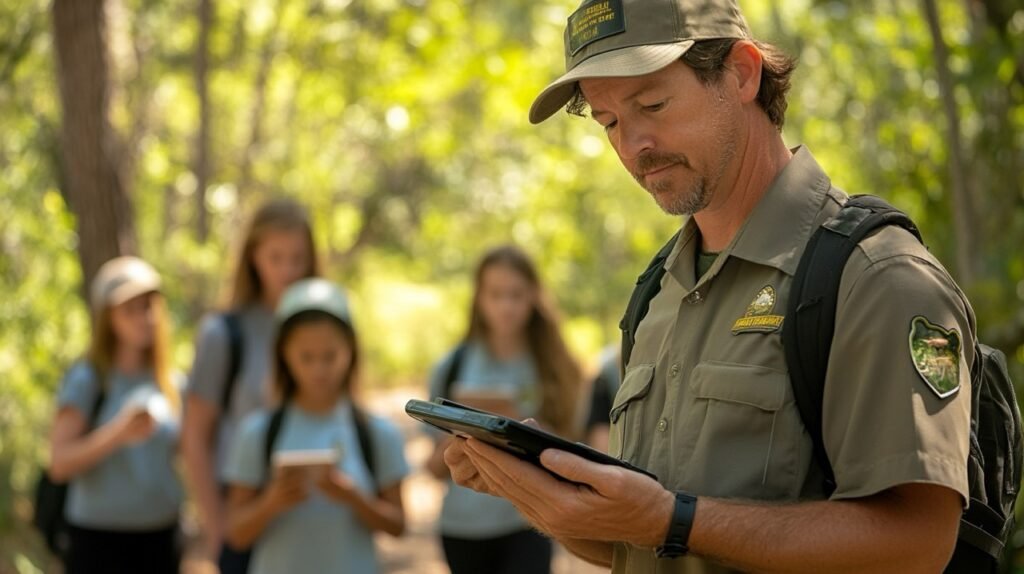
Proposed Developments
- Ocmulgee National Park and Preserve
- Potential expansion of current monument
- Would be Georgia’s first national park
- Trail Expansions
- New hiking and biking routes planned
- Improved connectivity between parks
Ongoing Challenges
| Challenge | Impact | Potential Solutions |
|---|---|---|
| Climate Change | Altered ecosystems, increased wildfires | Adaptive management strategies |
| Increased Visitation | Overcrowding, resource strain | Visitor use management plans |
| Funding Constraints | Maintenance backlogs, staffing issues | Public-private partnerships |
Technological Advancements
- Virtual reality tours for accessibility
- AI-powered wildlife monitoring
- Advanced fire detection systems
Conservation Initiatives
- Habitat corridor creation
- Native species reintroduction programs
- Dark sky preservation efforts
Educational Outreach
- Enhanced digital learning platforms
- Expanded youth engagement programs
- Citizen science opportunities
Visitor Support and Preservation
How you can help:
- Volunteer for park projects
- Practice responsible tourism
- Support conservation organizations
- Advocate for park funding
Sustainability Efforts
- Transition to renewable energy in park facilities
- Water conservation measures
- Waste reduction and recycling programs
Community Involvement
- Increased collaboration with local tribes
- Partnerships with nearby universities for research
- Community-based conservation projects
The future of Georgia’s national parks depends on balancing preservation with access. With proper management and public support, these natural treasures can thrive for generations to come.NPS Planning, Environment & Public Comment
Frequently Asked Questions (FAQs)
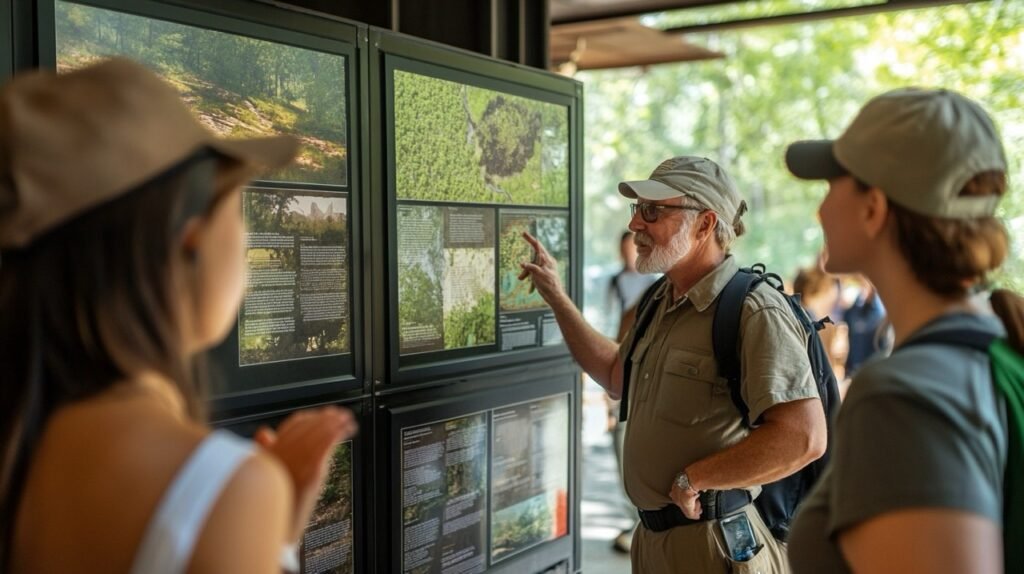
Are dogs allowed in Georgia’s national parks?
- Most parks allow leashed dogs in certain areas
- Restrictions apply in sensitive habitats
- Service animals are permitted in all areas
What are the entrance fees for Georgia’s national parks?
| Park | Fee |
|---|---|
| Chattahoochee-Oconee National Forests | Free |
| Cumberland Island National Seashore | $10 per person |
| Kennesaw Mountain National Battlefield Park | Free |
| Martin Luther King Jr. National Historical Park | Free |
Can I camp in Georgia’s national parks?
- Yes, many parks offer camping options
- Reservations often required
- Backcountry camping available in some areas
Are there any restrictions on drones in national parks?
- Drones are generally prohibited in all national parks
- Special use permits may be available for research or filming
What’s the best time of year to visit Georgia’s national parks?
- Spring: Wildflowers and mild weather
- Fall: Autumn colors and comfortable temperatures
- Avoid summer for cooler, less crowded experiences
Are there guided tours available in Georgia’s national parks?
- Most parks offer ranger-led programs
- Some parks have audio tours or apps
- Private tour operators available in some areas
Can I fish or hunt in Georgia’s national parks?
- Fishing allowed in many parks with proper licenses
- Hunting permitted in specific areas of some parks
- Check individual park regulations for details
Are there accessibility options for visitors with disabilities?
- Visitor centers are typically accessible
- Some trails offer accessible routes
- Specialized programs available in certain parks
What wildlife can I expect to see in Georgia’s national parks?
- Common sightings: deer, birds, small mammals
- Rare sightings: black bears, alligators (in coastal parks)
- Always maintain a safe distance from wildlife
Are reservations required for visiting Georgia’s national parks?
- Most parks don’t require reservations for day use
- Some popular areas or programs may require advance booking
- Always check the official park website for current requirements
Remember to check the official National Park Service website for the most up-to-date information before your visit.NPS Georgia Parks Information
Conclusion
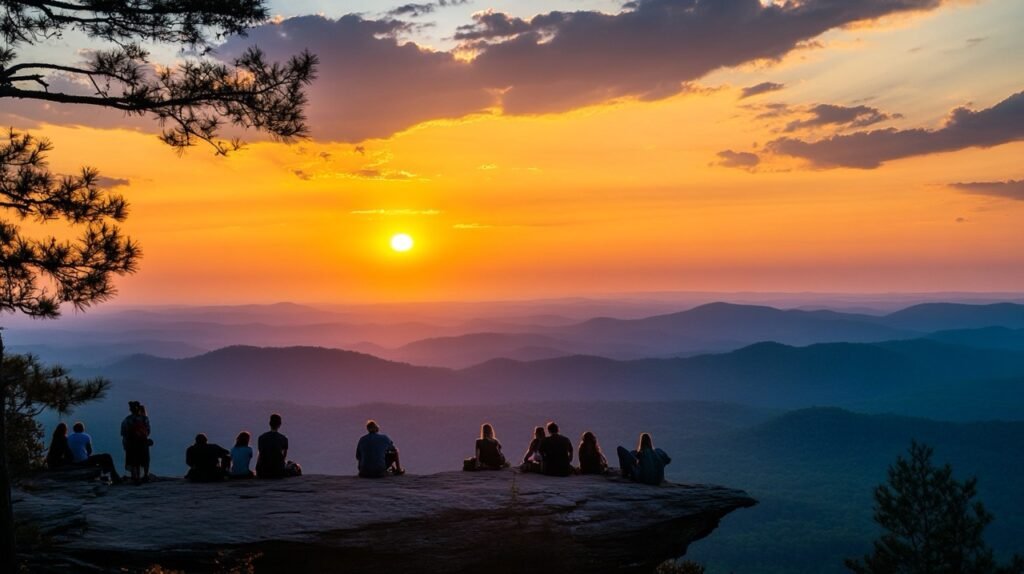
Key Takeaways
- Diverse Experiences
- Historical sites
- Natural wonders
- Recreational opportunities
- Conservation Importance
- Protecting ecosystems
- Preserving cultural heritage
- Supporting wildlife
- Economic Impact
- Boosting local economies
- Creating jobs
- Promoting sustainable tourism
- Future Challenges and Opportunities
- Climate change adaptation
- Balancing preservation and access
- Technological advancements
Why Visit Georgia’s National Parks?
- Connect with nature
- Learn about history and culture
- Engage in outdoor activities
- Support conservation efforts
Final Thoughts
Georgia’s national parks are more than just beautiful places. They’re living museums, outdoor classrooms, and natural sanctuaries. By visiting these parks, you’re not just creating memories; you’re participating in the preservation of America’s natural and cultural heritage.
